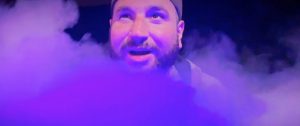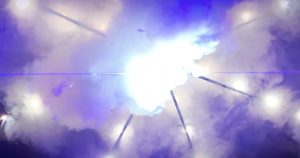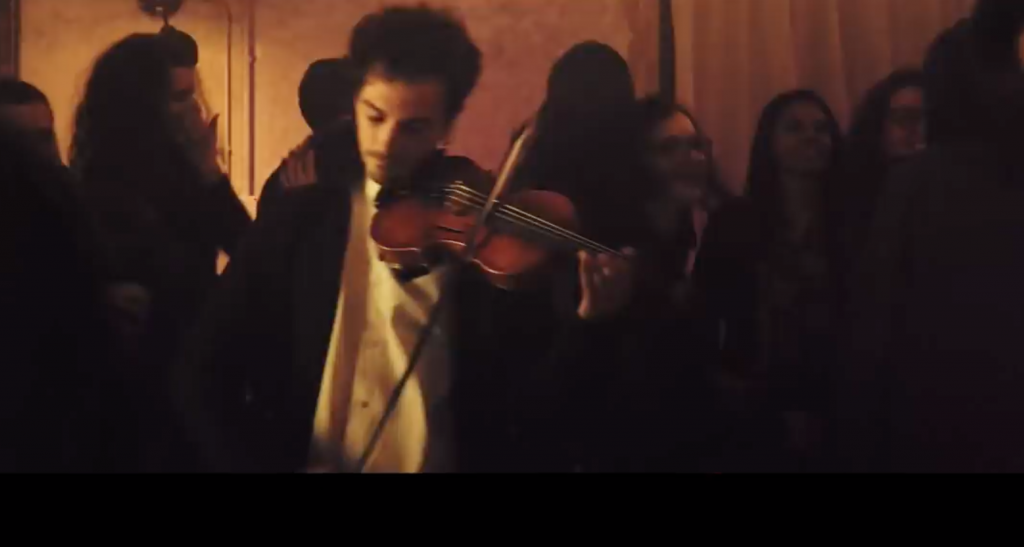At Boston’s 48 Hour. Film Project (2019), Kevin Issa’s “The Other Side” won the Best Film Award. But that was just the beginning. It also took the top prizes for directing, cinematography, actor, supporting actress, sound, editing, special effects, and screenplay.When a movie sweeps all the top prizes, it’s worth more than a look. This very special 48-hour film could serve as a text for anyone interested in learning the filmmaker’s craft. And if you want to dig deeper, check out the behind-the-scenes interview with the director following the movie.
Interview with Kevin Issa
MMM: What made you want to be a filmmaker?
Issa: As a kid, seeing movies like “Back to the Future,” “Star Wars,” “Home Alone,” “Ghostbusters,”and “ET” had a profound impact on me. Growing up as hyperctive kids with an overly active imaginations, my brother and I would recreate our own versions of our favorite movies and in some capacity act them out. That’s where it started for me. After taking family trips to Universal and MGM studios, getting to see behind the scenes on how some of the classic films and scenes were made, the desire to learn and to create those types of films became deeply instilled in me.
MMM: How did you develop your skills?
Issa: My best friend Kevin and I shot and cut a sketch comedy show called ‘Y2Kevin’ in our high school video production lab back in the year 2000. It was all manual tape to tape editing, dubbing in music from a cassette onto a VHS tape, etc. That was my first experience ever putting together an entire project. A few years later I got my own iMac computer, and purchased “Final Cut Studio: Classroom in a Book.” I went thru every chapter, learning how to edit things. If there was a particular lesson I didn’t feel solid on, I’d do the entire chapter again until I felt good on it. Eventually I took the concepts I learned there and begin using clips that I’d shot on my own rather than the ones they provided. From there it became a labor of love, shooting shorts, live events, and various other things, then cutting them together until I eventually started getting hired here and there to do projects.
MMM: Any other formal instruction?
Issa: Anytime there’s a particular skill, or effect that I’m interested in fine tuning, I’ll usually turn to YouTube pages like FilmRiot or any of the hundreds of great pages that do an amazing job at showing you how to do certain things. I also had the opportunity to work as a set PA on an ABC show called ‘Waterfront’ that filmed in my town back in 2006, which then led to getting to work on set of the Martin Scorsese movie “Shutter Island.” Getting to work directly next to some of the best to ever do it, and getting to see up close how certain shots and setups were executed was an experience unlike any other than I’ve had. I particularly loved getting to see how Scorsese works with his actors, and the detailed way in which he would instruct them on the scene being shot. Everything I observed and learned while working in those environments I’ve kept with me and apply to my own methods to this day.
MMM: How did you come up with the idea for “The Other Side”?
Issa: It’s kind of crazy to think about how the whole story came together. We were 21 hours into the 48 Hour Film Project competition. My team and I had spent so much time trying to force together a story that we’d run into a wall. My best friends Kev Houlihan and Ryan Blake pulled me aside and told me we were at the point that I just had to decide what we were going to shoot, otherwise we wouldn’t get the project completed on time. I told them, “I’m gonna go shower, and when I come back up, I’ll have something for us.” And what I came up with was inspired by a one-line premise from an old note on my iPhone: “Guy gets abducted by aliens, but is bitter because he wants them to come back for him.”
MMM: That’s a solid logline: character, emotion, desire.
Issa: Thinking about this as a fish out of water story made sense, and shooting it like a documentary felt like something that we could have some fun with. Not to mention that we now only had about 25 hours until the completed project was due. The rest of us came up with ways of incorporating the required elements into the story, and from there we started shooting. The emotional tone for the film comes from a place of repressed emotional distress that I’d personally been carrying around for months leading up to making this film. I think the mix of dark comedy, sci-fi, drama, and romance are what makes this story unique. Having such an unusual mix of elements gives it the texture that an audience is able to relate to and hopefully connect with.
MMM: You’ve hinted at the stress of making a movie in 48 hours.
Issa: It’s absolute madness. We’ve been doing it every summer for 10 years now, always rolling with a team of 5-8 total people. Always comprised of a group of my close friends and family. It’s stressful. It’s physically and mentally draining even when it goes well. Making a movie start to finish in 48 hours isn’t for everyone. But for the right kind of crazy people, it’s a rush unlike any other. When you finish and your team is proud of the work you’ve all done, it’s a very satisfying feeling.
MMM: How did you plan the shoot?
Issa: Once I’d come back from taking a shower I’d basically had the entire outline for the movie, which was then broken out into a shot list. We knew for it to be documentary style, we needed to shoot interviews, we needed scenes of the main character interacting with the world around him, a flashback scene, and an “ascension” scene of some kind. Since we only had a few hours of daylight to work with , we started with the scenes and pretty much came up with the locations and shot selections on the fly.
MMM: Why did you decide to shoot with a phone?
Issa: Given the fact that we only had 27 hours remaining to shoot, edit, and turn in our finished film, we knew we had to be able to move quickly and be as efficient as possible. I loved the look that we got in the first short film that we shot with the Moondog Labs Anamorphic lens on an iPhone 8 Plus last summer. Once we finally outlined the film and I’d created a shot list, deciding to shoot with the iPhone XS Max with the Moondog Labs lens felt like the best option. It allowed me to shoot the entire movie handheld minus the interviews, and I honestly don’t think this project would have come out anywhere near as good if we’d tried shooting it a different way. Having something so mobile and lightweight, while being able to shoot such cinematic and high quality footage with it, is an absolutely ideal situation. Once I decided that the interviews and music would serve as the soundtrack to the entire film, I knew that I would save myself the hassle of having to be concerned with capturing audio. This really allowed me to focus on framing and staging the visuals. Anyone who has shot anything with a phone knows that there can be quality issues with capturing audio. Since we were already running behind on time, recording external audio that I’d later sync in post didn’t seem feasible.
MMM: What about the visual effects?
Issa: Everything in our film was shot in camera. Another great thing about doing the 48hour film project, is the way you’re tasked with figuring out how to pull shots off with what you have around you. It really forces you to think about the most practical ways to shoot things and puts the pressure on your creativity to figure out a solution that can be done essentially for free, and taking as little time as possible while still getting what you need.
MMM: Can you give us some specifics about the effects shots
Issa: All of them—the flashback, the spaceship and the ascension—involved the use of the fog machine, with strobe and led lights to add atmospheric realism to the shots. The fog helped us to hide parts of the frame that would’ve revealed that we were actually in my backyard or in my basement.
Of the three shots, my favorite is how we did the spaceship at the end. I got really low on my patio and had my cousin Tyge on the fog machine, and Ryan on the ‘spaceship’. We used my cantilever umbrella which also has solar powered LED lights underneath it. I attached a high powered led flashlight to the underneath of the umbrella to simulate the beam of light hitting the main character. All we did from there was using the cantilever, rotate the umbrella in filling the frame, then completely out of the frame.
Without the lights and the fog, I don’t think we would’ve been able to sell any of these effect shots. The fog machine, and the remote controlled LED strip lights were all things that helped us enhance the quality of the story and give it some of the texture that it ended up having. The aerial footage—taken with thee DJI Mavic 2 Zoom—also contributed to the visual impact.
MMM: The performers are all wonderful. We’d like to know about your casting process.
Issa: All of the actors in this movie are actually my cousins, with the exception of my friends Ryan and Kevin. Once the story had been outlined, the roles were basically decided based on who was there. I felt like my cousin Joe had the most range, and I could just see him playing the lead character well. In the outline I decided that, to add some integrity to George’s story, all good documentaries have other people close to the subject to humanize them. Ryan came up with the character name Kip literally as we rolled his interview. The interviewer and cameraman are my cousins Tyge and Brennan, and the sister of George is played by his actual sister, my cousin Erin.
MMM: The locations play a key role. Can you talk about your location scouting?
Issa: While coming up with the shot list I usually will add a location for where the scene takes place. Since time was very limited I wanted to try and find locations in close proximity to my house, or at my house. I keep a running list of places near to where I live that have some character or unique qualities to them. It’s extremely helpful to be aware of what’s around where you live and to keep track of these places so you scan through in times like this. We were able to shoot most of the film at my house, including the opening drone shot of Joe sitting on the roof. The only other locations we went to were all within a three-minute drive from my house.
MMM: How you get such convincing performances?
Issa: Directing is something I’ve really grown to love getting the chance to do. For me, it’s all about giving the actors the freedom to put as much of themselves into their performance as possible. If there’s a specific line, or punchline that needs to be delivered a certain way, I’ll usually feed them the line a few different ways and have them say it a few times until it feels natural. Paying close attention to the nuance of their tone, facial expressions, mannerisms, and eyes is a really effective way to get actors to feel connected to the role their playing. Everyone is different, and knowing the people that you’re working with on a personal level will always help you to convey direction to them in a specific way that they can relate to and understand.
MMM: The cinematography is beautiful, way beyond what we might expect to see in a movie made in 48 hours. Was this improvised?
Issa: All of the cinematography for this film was done by myself and my best friend Kevin Houlihan. We usually co-direct and co-write all of the short films together, but on this particular project we only had him available for half of the day. Once we set out to start filming we’d get to a location and look around the spot for the angles trying to get as much from each location as possible. We knew that we wanted to put Joe (George) in open space where we could reinforce the idea of him being alone, isolated, and in some cases trapped. Aside from the interviews, the rest of the cinematography was basically improved on the fly, a theme started to emerge as we got going, which helped us decide what to shoot as we went.
MMM: What about post production?
Issa: The editing was done entirely in Adobe Premiere Pro CC. We wrapped shooting around 1:30 am Sunday morning. I took a quick shower to wake myself up, then spent the next 18 hours cutting the film. Since the finished project needed to be dropped off at a location in Boston by 7:30 pm, I had my friend Ryan (the character ‘Kip’ from the film) drive my car while I sat in the shotgun seat with headphones on racing to finish the edit as we drove the hour ride from Rhode Island to the drop-off. The entire car ride was a blur, and the entire last act of the movie was assembled during that time. Upon arrival at the drop-off, we had three minutes left to get the project turned in. My friend Kev and I hopped out of the car and walked into the venue as the finished film was exporting on my laptop in my hand. We turned in our finished film with about 30 seconds left before it would have been considered late and not able to be considered for any of the judges awards. To this day I still don’t really know how I was able to finish the whole thing during that time frame, but I am very thankful that it all worked out.
MMM: What about the music?
Issa: The music is entirely sourced from ProductionCrate . I’ve been a subscriber on there for a few years now and can not speak highly enough about the value you get with this site. From effects, tutorials, 3D elements, stock footage and music, it’s an absolute gold mine of a site for someone in the video world.
For those who enjoy Behind the Scenes videos (including bloopers), check out this link.
To keep up with Kevin Issa, subscribe to his YouTube channel, visit his website, and follow him on Instagram.
# # #
The editors of MobileMovieMaking have chosen “The Other Side” as a Mobile Movie of the Week.





 Previous post
Previous post
 Next post
Next post






Loved this production!